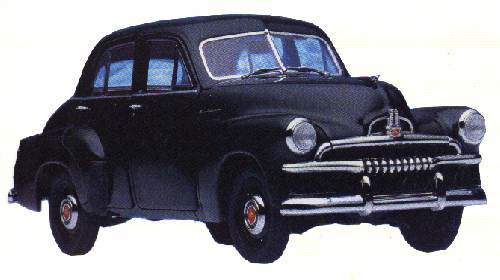
Home
Dad's Army Unit
& Associated Stuff
Soldier Settlement - the who, what and where?
Ditties for you to read
Send a CooEE!!

Ruffus Page
Today, this curvey classic is considered a quintessential image of Australia and an icon of the fifties. Through little more than an update of the earlier, and original 48-215 Holden - with a new grille and added chrome - the FJ quickly became the country's most talked about, and most popular motor car.
On the roads and in driveways everywhere, the FJ was a symbol of post war prosperity, and for General Motors Holden it marked the beginning of an export trade, since for the first time Holden cars were exported to New Zealand.
Now.... how did it all begin.....
Throughout the following decades - until well into the age of the horseless carriage as motor cars were first named - the company prospered and expanded.
By the early twentieth century it had become known as Holden's Motor Body Builders, and a large part of its business then comprised fitting vehicle bodies to imported chassis and drive trains. At that time Australia's only vehicle manufacturing industry was that of body building and Holdens were at the forefront in this area.
In 1931, Holden's Motor Body Builders amalgamated with General Motors Australia Pty Ltd, a local subsidiary of the General Motors Corporation to form a new company call General Motors-Holden's Ltd, which, in 1945 undertook an agreement with the Commonwealth Government to develop an Australian car for mass production.
The result was the launching of the first Holden 48-215 was superseded by the FJ model, the most legendary car Australia has ever known.
For in reality the now famous FJ was little more than an update of the original FX with the addition of a bit more chrome and a few more features. The FX's vertical grille was replaced by a more elaborate horizontal chrome arrangement, plus there were different hubcaps and bumpers and new and noticeable metal body decorations which included small chrome fins on the rear guards and a Holden badge mounted proudly on the front centre of the bonnet.
The FJ used essentially the same powertrain as the 1948 FX; therby retaining that model's major selling points: high ground clearance, good ride, great performance, plenty of room with seating for six, low maintenance and great fuel ecomony.
The FJ also offered value for money. The standard sedan sold for 1023 pounds.
The release of the FJ also marked another significant first for the Australian motor vehicle industry. For in addition to the Standard and Business Sedans and Utility models, first available in the FX, the FJ range also offered a panel van variety.
Today the few remaining FJ Holdens on our roads turn heads whenever they go, and those maintained in original condition sell for many, many times their original 1950's purchase price. Those housed in the nation's motoring museums are key exhibits that always attract a great deal of attention...
For the FJ has become an icon of the fifties in Australia ..... a much-loved memento for everyone who can remember of the good old days on Sunday drives and family outings in Dad's first car, of Drive-ins and the sweet memories of teenage romance, of bobby sox, the juke box and the excitement of rock'n'roll.
